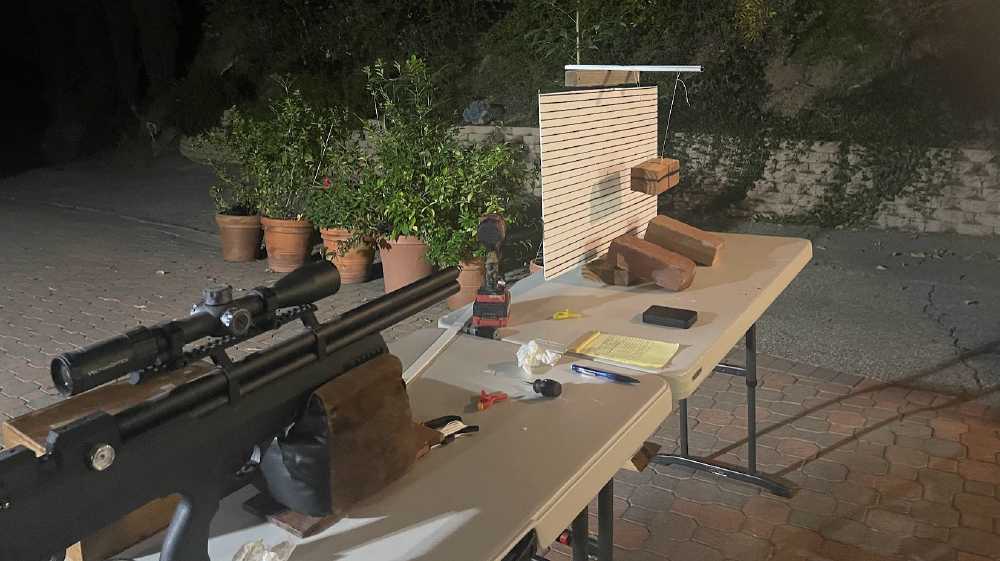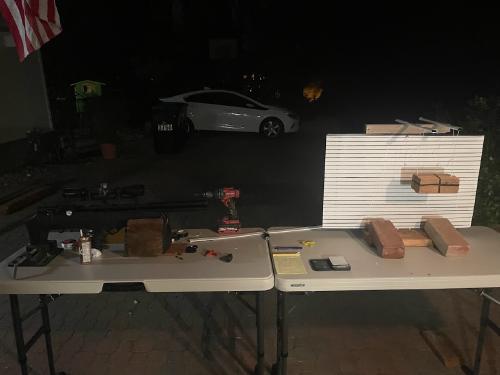The Idea
I was sitting in Physics class one day and we were learning about the basics of conservation of momentum. My teacher then explained how for some problems, such as a ball striking a pendulum, conservation of energy could be used to find unknowns such as the resulting speed of the pendulum. Then I thought, “Hey! I have an airgun and have always wanted to measure it’s muzzel velocity, I wonder if I could rework this problem to find the speed of the projectile?” Sure enough when I talked to my teacher after class about my idea I learned I wasn’t the first person in history to have this idea. This concept was called a balistic pendulum and was used to measure the muzzel velocity of firearms for before modern equipment since it’s invetion in 1742. I decided I would build my own once I got home.
Requirements
- A block to shoot into, which would trap the bullet inside. Then the block and bullet would be a combined system after the collsion making the problem possible by finding the change in height of the block and bullet.
- A way to measure the change in height of the block
- A scale to measure the mass of each bullet and the block after each trial.
Set-up

- The airgun was mounted just far enough away so that the air released during the shot would not move the block.
- The block was made from soft pine which would trap the bullet.
- Lines on a cardstock allowed for the change in height to be measured in 20mm increments.
Procedure
For each trial the mass of the pellet was measured before it was loaded into the airgun. Then mass of the block was measured. The pellet was fired into the block and the motion of the block recorded in slo-mo with a phone. This video could then be analyzed later to determine the change in height of the block.
During this experiment the mass of the string was considered negligable, since it was much less than the mass of the block.
Results
After the calculations the average speed of the pellet was determined to be around 450 m/s. This value was slightly dissapointing since the pellet gun was expected to shoot in the 700-800 m/s range. I suspect that the error could lie in inaccuracies when measuring the change in height of the block. Overall this experiment was still considered a success as I was able to learn alot and effectively use physics principles to design an experiment for my needs.
